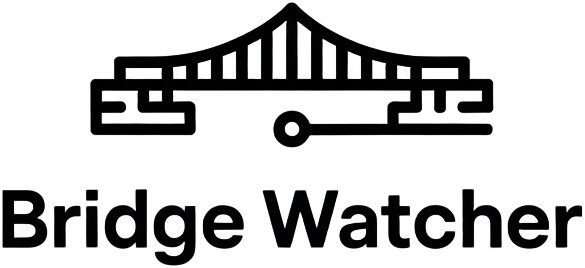
Cross-chain bridges have long been the connective tissue of decentralized finance, enabling assets and data to flow across disparate blockchains. But in 2025, the DeFi community is reckoning with a sobering reality: while bridges account for only 12% of transaction volume, they are responsible for a staggering 69% of all DeFi losses. This outsized risk has spurred a new wave of innovation provides bridge-free cross-chain protocols: that promise to rewrite the rules of blockchain interoperability and dramatically reduce attack surfaces.

Why Traditional Bridges Are DeFi’s Achilles’ Heel
The core challenge with legacy cross-chain bridges lies in their inherent complexity and reliance on intermediaries. Most traditional bridges require users to lock assets on one chain and mint synthetic tokens on another, often depending on centralized validators or multi-signature schemes to enforce security. This structure creates multiple points of failure, and hackers have taken notice.
Consider the Poly Network hack (2021), where a vulnerability allowed an attacker to siphon over $600 million in assets, or the Wormhole exploit (2022), which resulted in $320 million lost due to flawed smart contract logic. These incidents are not isolated; rather, they’re symptomatic of systemic issues that plague bridge architectures: complex trust assumptions, opaque validator sets, and massive honeypots of locked value.
If you’re interested in why these vulnerabilities persist and how real-world exploits unfold, I recommend reading our deep dive into bridge security risks.
The Bridge-Free Paradigm: Direct Chain-to-Chain Security
Bridge-free cross-chain protocols aim to solve these problems at their root by eliminating the need for asset custody or centralized coordination altogether. Instead of relying on external validators or wrapped tokens, these protocols facilitate direct interactions between blockchains using cryptographic primitives and decentralized verification mechanisms.
The most promising technical approaches include:
- Zero-Knowledge Proofs (ZKPs): Protocols like zkBridge use ZKPs to enable trustless transaction validation across chains, no sensitive data is exposed, and verification is mathematically enforced.
- Decentralized Verification Networks (DVNs): By distributing transaction validation across many independent nodes, DVNs eliminate single points of failure that plagued earlier bridges.
- Atomic Swaps: These smart contracts ensure that asset exchanges between chains are either fully completed or not executed at all, removing any risk of partial loss due to failed transfers.
- Inter-Blockchain Communication (IBC): Standardized messaging protocols like Cosmos’ IBC leverage light clients and cryptographic proofs for secure state verification between blockchains.
This evolution isn’t just theoretical; it’s already reshaping how developers design interoperable DeFi applications. By removing intermediaries from the equation, we see a dramatic reduction in both technical complexity and exploitable surface area, a win-win for builders and users alike.
A Closer Look at Key Bridge-Free Technologies
Diving deeper into the mechanics reveals why these new protocols are so much safer than their predecessors:
- ZKPs provide mathematical certainty: Even if every other component fails, as long as the proof is valid, no malicious actor can forge transactions between chains without detection.
- DVNs harness distributed consensus: Instead of trusting a handful of validators (an obvious target), attackers would need to compromise a majority across thousands of nodes, a far more daunting prospect.
- Atomic swaps eliminate counterparty risk entirely: The swap either happens exactly as agreed or it doesn’t happen at all, no middle ground for attackers to exploit.
- Clever use of IBC unlocks secure composability across ecosystems like Cosmos without ever relying on centralized bridges or custodial models.
The upshot? With each step away from legacy bridge models comes greater transparency, auditability, and resilience against both known exploits and emerging threats. For protocol designers weighing trade-offs between usability and security, this shift represents a real inflection point in DeFi infrastructure design.
Developers and security researchers are already seeing the benefits of this paradigm shift. Bridge-free cross-chain protocols are not only less vulnerable to catastrophic exploits, but also easier to audit and integrate with existing DeFi primitives. By minimizing the number of trusted parties and eliminating the need for large pools of locked assets, these solutions drastically reduce the incentives and opportunities for attackers.
Another major advantage is the composability unlocked by standardized messaging protocols. For example, Cosmos’ IBC allows assets and data to move between dozens of chains without ever passing through a centralized bridge. This enables new forms of DeFi composability, like unified liquidity pools and cross-chain lending, without the baggage of legacy bridge risks. The result is a more robust, modular, and innovation-friendly ecosystem.
Real-World Impact: Lowering the Barriers to Secure Interoperability
As more projects adopt bridge-free models, the DeFi landscape is seeing a measurable drop in systemic risk. Protocols leveraging zero-knowledge proofs and decentralized verification networks have, to date, avoided the multi-million dollar exploits that continue to plague traditional bridges. The industry is also moving toward greater transparency, with open-source implementations and rigorous formal verification becoming the norm.
Of course, no solution is a silver bullet. Bridge-free protocols introduce their own set of technical challenges, such as ensuring liveness, managing network congestion, and maintaining cross-chain state consistency. But the security assumptions are fundamentally more sound, and the attack surface is smaller and more transparent. For developers, this means less time spent patching vulnerabilities and more time building innovative products.
If you’re a DeFi builder or security analyst, it’s worth exploring our practical risk assessment framework for cross-chain protocols to understand how these new models stack up against legacy bridges.
Looking forward, the most exciting developments are happening where bridge-free security meets user experience. Unified account abstraction and universal settlement layers are on the horizon, promising to make cross-chain DeFi as seamless as single-chain interactions, without sacrificing security. As these technologies mature, expect to see a new generation of dApps that are safer, more composable, and truly chain-agnostic.
Key Takeaways for DeFi Builders and Users
- Bridge-free cross-chain protocols remove the most common attack vectors by eliminating asset custody and centralized coordination.
- Technologies like ZKPs, DVNs, atomic swaps, and IBC deliver measurable improvements in both security and user experience.
- While no protocol is immune to risk, bridge-free models are proving far more resilient to large-scale exploits.
- As adoption grows, expect the DeFi risk landscape to shift dramatically in favor of users and builders, not attackers.
The bottom line: as DeFi matures, the move away from legacy bridges isn’t just a technical upgrade, it’s a foundational shift toward a safer, more open financial future. If you’re serious about DeFi risk reduction and long-term protocol security, now is the time to get familiar with bridge-free cross-chain architectures.






